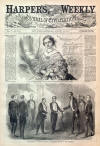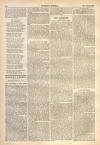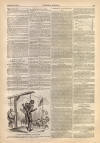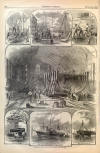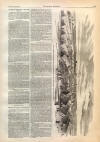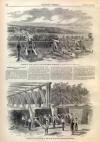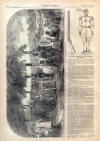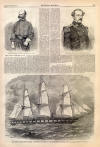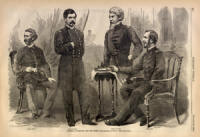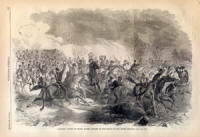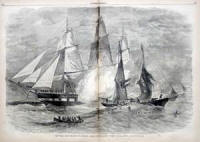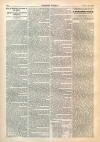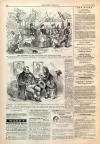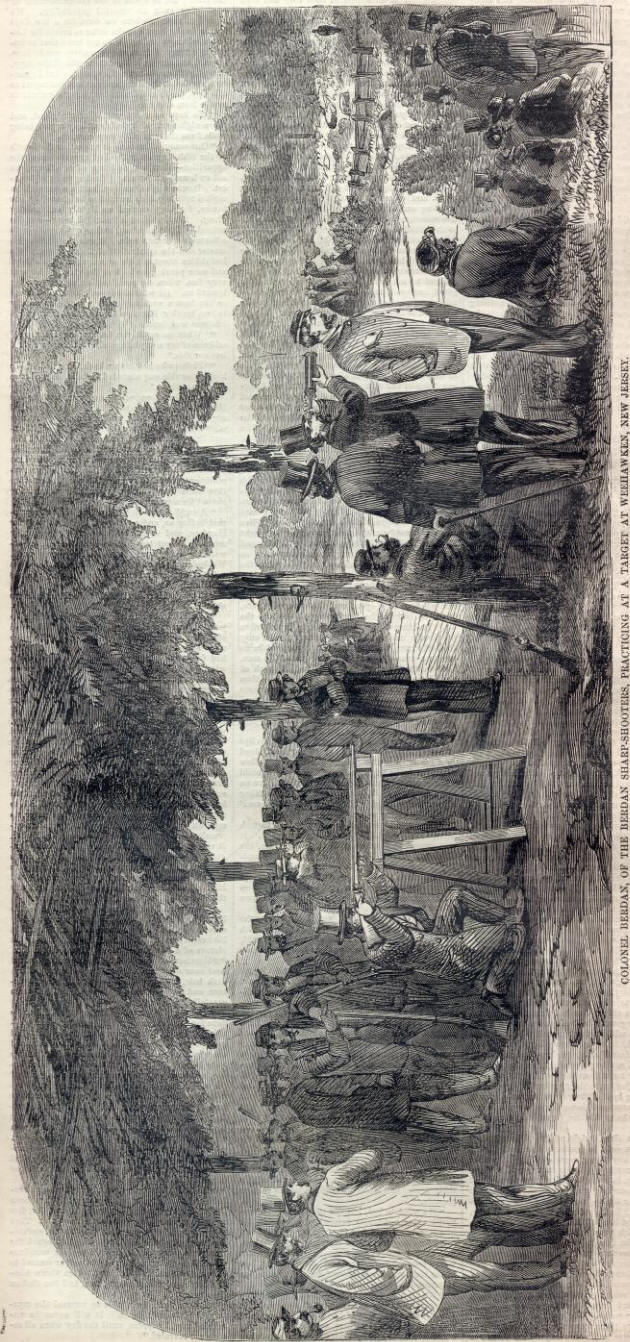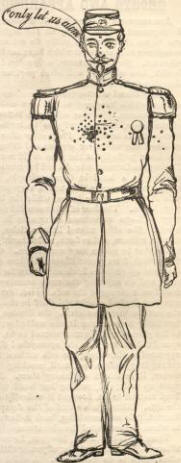COLONEL BERDAN AND HIS
SHARPSHOOTERS.
WE illustrate herewith the
exploits of Colonel Berdan and his famous sharp-shooting regiment, which will
shorty be heard of at the war. On 7th the Colonel gave an exhibition of his
skill at Weehawken, New Jersey, in presence of a large crowd of spectators. The
reporter of the Evening Post thus described the scene:
The "man target," christened
Jeff Davis, was set up at a distance of a
little more than two hundred yards. Colonel Berdan inaugurated the firing. In an
easy, business-like way he loaded his rifle, an ordinary target piece, with a
telescopic sight, and approached the "rest." The visitors crowded around him in
every direction, excepting, of course, that occupied by the muzzle of the rifle.
A sense of personal danger preserved a small opening there. The wind blew quite
heavily.
It will be conceded that these
circumstances were not particularly conducive to careful and unerring aim. But
Colonel Berdan is a man of wonderful nerve. The crowd did not at all disturb
him. He proceeded in the work with the utmost steadiness. Balancing his rifle
for a moment, he fired at the head of the figure. When the smoke cleared away,
the hole made by the bullet was observed by the aid of the telescope—the cheek,
near the nose.
Again the Colonel loaded and
quickly fired at the head, hitting it just over the frontispiece of the cap
which was painted upon it.
The third shot was fired. "Put
his eye out," remarked the Colonel. The ball had struck near enough to that
organ to destroy its use had it been a real one.
The fourth shot hit the face.
"I'll try nature's rest," said
the Colonel, and he proceeded to a knoll near by, and throwing himself at its
side, accommodated his person to its shape and took aim, but the percussion cap
only exploded. "Davis is safe this time," he remarked. "We'll try him again."
Another cap was provided, and the image was struck just below the front piece of
the cap. The aim was quite as accurate as that he had previously obtained.
The sixth shot hit about two
inches lower than the fifth.
The seventh hit the top of the
head.
Loading again, the Colonel made
ready to fire. " Where will you have this shot?" he inquired of one standing by.
"In the end of the nose," was the answer. "Between the eyes," suggested another.
At this moment the rifle was discharged. " You spoke too late," quietly remarked
the Colonel, " he has another nostril." A gentleman was called to witness the
effect of the shot, and afterward our reporter. It was as the Colonel had said.
The nose had an additional aperture.
"Where shall I put the next
shot?" the Colonel inquired of the gentleman at whose request he had spoiled the
nose of the image. "Try his right eye," was the answer. No sooner said than it
was done. The ball entered the lower part of the eye. The effect of this shot
was carefully noted by several persons through the glass.
"Will you tell me where to hit
him again?" once more asked the Colonel of the person who had called the last
two shots. That individual declined. He was satisfied that the Colonel could hit
any thing, and it was not worth while to fire at the image, whose face was
riddled. '' We will hit him once more, and now in the centre of the forehead."
This shot, the tenth, was the finest of the whole. It took effect midway between
the front piece of the cap and the root of the nose, and directly over that
organ. The distances were almost mathematically accurate.
The Times thus speaks of the
Regiment :
Some idea of the rigidity of the
test may be gathered from the fact that no man is admitted who does not shoot,
at 600 feet distance, ten consecutive shots at an average of five inches from
the bull's-eye. That is, the aggregate distance of the whole ten shots must not
exceed fifty inches. Not a man is accepted under any circumstances who varies a
hair-breadth from the mark. Remarkable though it may seem, many of the men
exceed this proficiency. Colonel Berdan himself has, on a windy day, with a
strange rifle, put ten balls within an average distance of one inch and
one-tenth each from the bull's-eye, at 600 feet. At 1000 feet the Colonel made a
string of 22 inches. Sergeant-Major Brown, under more unfavorable circumstances,
made a string of 33 inches, or a little more than three inches each ball, at a
distance of 100 yards, with a strange rifle. In testing the applicants at
Albany, about two-thirds were found unfitted, and indeed the general average of
incompetent applicants is more than that. The American riflemen prove generally
superior, especially the hunters of New England and the West. The First
Lieutenant of Captain Shoenecker's company is Mr. Sonnley, formerly Professor of
Mathematics in the
Nashville Military Academy, and other gentlemen equally
qualified will be in the ranks.
The uniform of the sharp-shooters
will be green in summer and gray at other seasons, to assimilate as nearly as
possible with the colors of nature. They ridicule the idea of Zouave and
Havelock uniforms, as affording too splendid a target for marksmen. They will be
armed with the most improved Springfield rifle, with a plain silver pin sight at
the muzzle, and notch sight, or the globe sight at the breech for long range, or
on a dark day, or night shooting. It was at first intended to arm them with the
Northern target-rifle, but it was found that there were not enough in the
country. Colonel Berdan has invented a ball which is superior to the old
Springfield rifle ball. It will carry with great accuracy a distance of 3000
feet. It is a grooved and conical ball, and is almost certain for a horse at the
distance of three-fifths of a mile. Each man may take his own rifle if he
wishes.
The design of the Colonel is to
have the regiment detached in squads on the field of battle to do duty in
picking off officers and gunners on the European plan, by which they take the
risk of being cut off by cavalry, or executed, as they certainly would be, if
taken. It is the first regiment of rifles ever formed worthy of the name—i. e.,
that subjected each member to the rifle-shooting test.
Colonel Berdan comes of
Huguenot
stock. His ancestry came to this country after the Revocation of the
Edict of
Nantes. He was born in the western part of New York.
